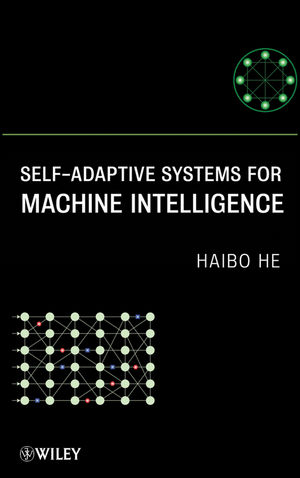
Self-Adaptive Systems for Machine Intelligence
Wiley-Interscience (Verlag)
978-0-470-34396-8 (ISBN)
Haibo He, PhD, is Assistant Professor in the Department of Electrical, Computer, and Biomedical Engineering at the University of Rhode Island. His primary research interest is computational intelligence and self-adaptive systems, including optimization and prediction, biologically inspired machine intelligence, machine learning and data mining, hardware design (VLSI/FPGA) for machine intelligence, as well as various application fields such as smart grid, sensor networks, and cognitive radio networks.
Preface. Acknowledgments.
Chapter 1. Introduction.
1.1 The Machine Intelligence Research.
1.2 The Two-Fold Objectives: Data-Driven and Biologically-Inspired Approaches.
1.3 How to Read this Book.
1.4 Summary and Further Reading.
References.
Chapter 2. Incremental Learning.
2.1 Introduction.
2.2 Problem Foundation.
2.3 An Adaptive Incremental Learning Framework.
2.4 Design of the Mapping Function.
2.5 Case Study.
2.6 Summary.
Chapter 3. Imbalanced Learning.
3.1 Introduction.
3.2 Nature of the Imbalanced Learning.
3.3 Solutions for Imbalanced Learning.
3.4 Assessment Metrics for Imbalanced Learning.
3.5 Opportunities and Challenges.
3.6 Case Study.
3.7 Summary.
Chapter 4. Ensemble Learning.
4.1 Introduction.
4.2 Hypothesis Diversity.
4.3 Developing Multiple Hypotheses.
4.4 Integrating Multiple Hypotheses.
4.5 Case Study.
4.6 Summary.
Chapter 5. Adaptive Dynamic Programming for Machine Intelligence.
5.1 Introduction.
5.2 Fundamental Objectives: Optimization and Prediction.
5.3 ADP for Machine Intelligence.
5.4 Case Study.
5.5 Summary.
Chapter 6. Associative Learning.
6.1 Introduction.
6.2 Associative Learning Mechanism.
6.3 Associative Learning in Hierarchical Neural Networks.
6.4 Case Study.
6.5 Summary.
Chapter 7. Sequence Learning.
7.1 Introduction.
7.2 Foundations for Sequence Learning.
7.3 Sequence Learning in Hierarchical Neural Structure.
7.4 Level 0: A Modified Hebbian Learning Architecture.
7.5 Level 1 to Level N: Sequence Storage, Prediction and Retrieval.
7.6 Memory Requirement.
7.7 Learning and Anticipation of Multiple Sequences.
7.8 Case Study.
7.9 Summary.
Chapter 8. Hardware Design for Machine Intelligence.
8.1 A Final Comment.
References.
| Sprache | englisch |
|---|---|
| Maße | 160 x 241 mm |
| Gewicht | 522 g |
| Themenwelt | Informatik ► Theorie / Studium ► Künstliche Intelligenz / Robotik |
| Technik ► Elektrotechnik / Energietechnik | |
| ISBN-10 | 0-470-34396-6 / 0470343966 |
| ISBN-13 | 978-0-470-34396-8 / 9780470343968 |
| Zustand | Neuware |
| Haben Sie eine Frage zum Produkt? |
aus dem Bereich


